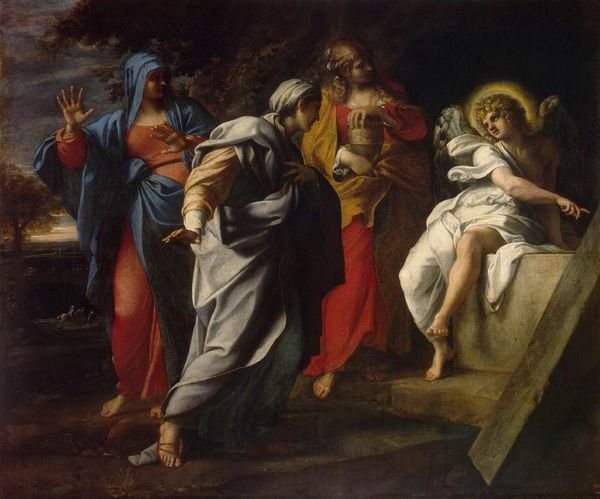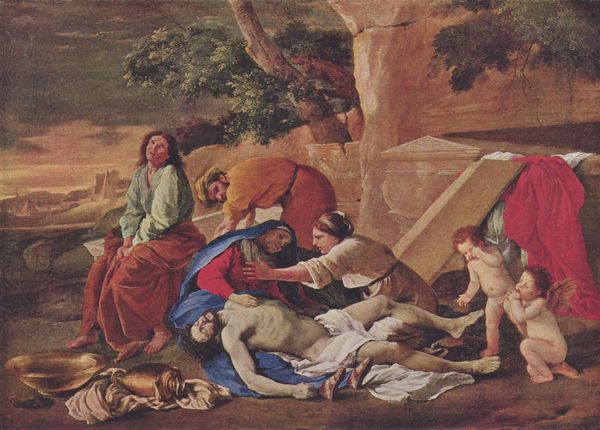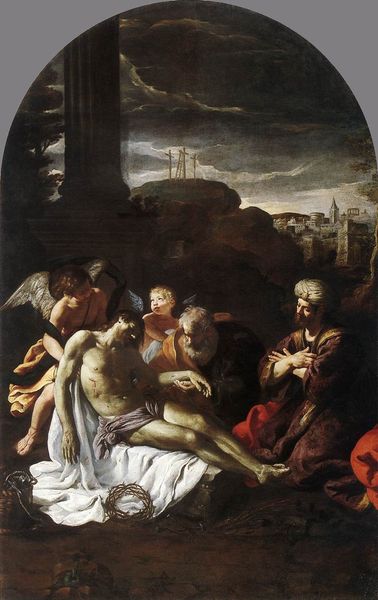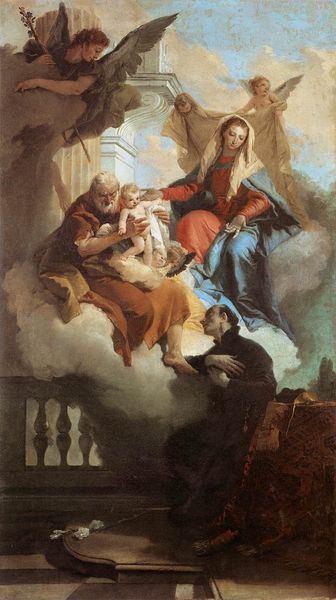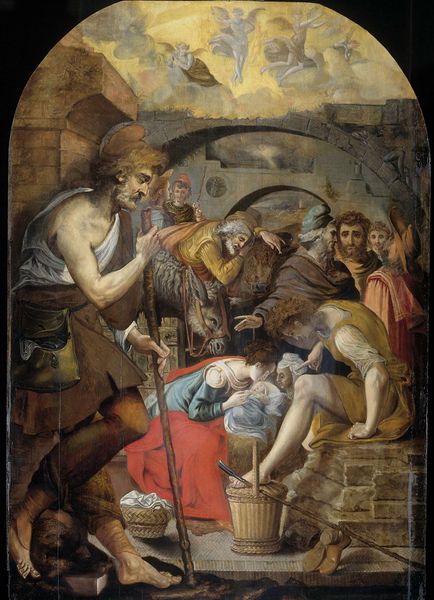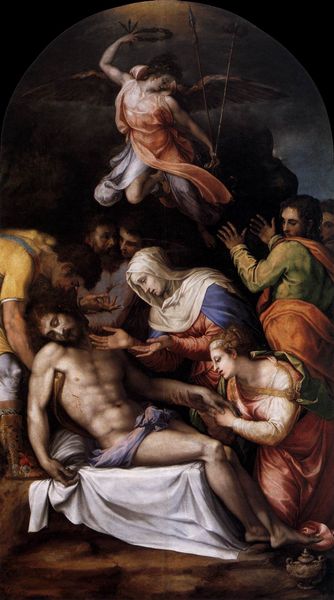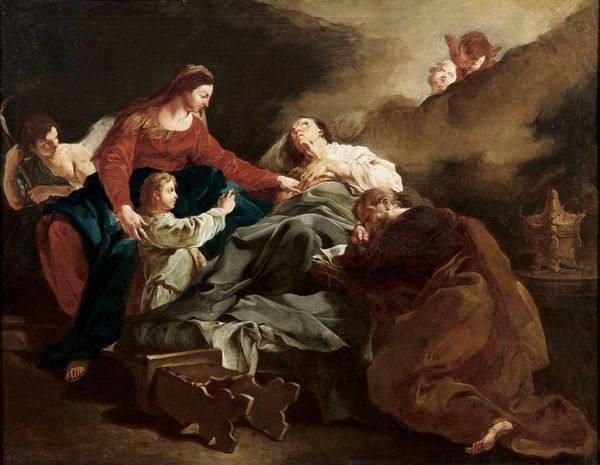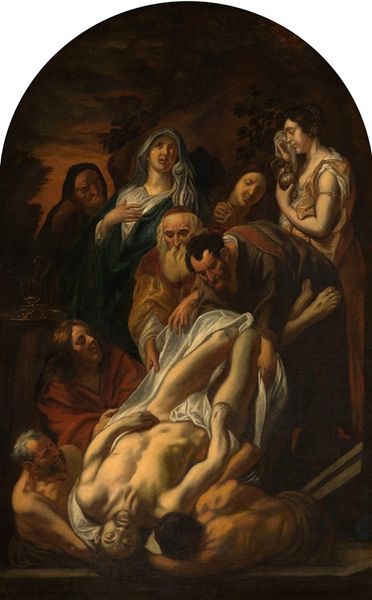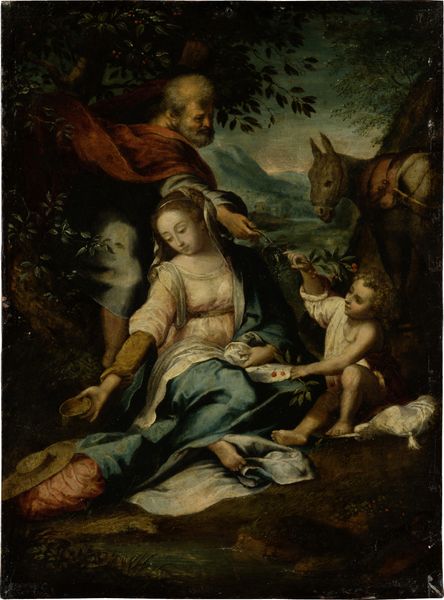
painting, oil-paint
#
portrait
#
baroque
#
painting
#
oil-paint
#
oil painting
#
christianity
#
history-painting
#
portrait art
Dimensions: 193 x 130 cm
Copyright: Public domain
Editor: Here we have Eustache Le Sueur’s “St. Bruno Appearing to Comte Roger,” painted in 1648, rendered in oil paint. It’s such a dramatic scene! I am struck by the tension between the figures, especially with the contrast between the monk’s serene stance and Comte Roger's alarmed reaction. What's your interpretation of this historical moment captured in paint? Curator: It's key to understand this painting within the context of the Counter-Reformation and the rise of Baroque art, heavily favored by Catholic patrons seeking to inspire faith through dramatic visuals. Le Sueur, though French and leaning towards classicism, still imbibes that Baroque sensibility. Notice how the composition emphasizes a divine interruption into earthly affairs. The historical accuracy might be secondary to the didactic purpose. How does that inform your reading of the figures' expressions? Editor: It definitely makes sense that the emotions are heightened to convey a stronger message. It feels like the artist wanted to show not just the event, but the power and divine authority at play. Is there something particularly French about this type of Baroque, distinct from, say, Italian Baroque? Curator: Absolutely. French Baroque often carries a certain restraint, a leaning toward order and classical ideals even amidst the drama. Think of the simultaneous development of classicism in architecture at the time. In contrast, Italian Baroque revels more fully in dynamic movement and overt emotion. This painting, though visually arresting, maintains a certain decorum expected by the French Royal Academy, for example. Editor: That’s a really insightful distinction. I hadn’t considered the impact of the French Royal Academy on painting style, but it explains a lot about the painting's overall composure. Thanks, I see it with a new perspective. Curator: My pleasure. Reflecting on this work reinforces how even seemingly straightforward historical paintings operate within specific cultural and institutional frameworks. Always question who commissioned the work and the message they sought to project!
Comments
No comments
Be the first to comment and join the conversation on the ultimate creative platform.
